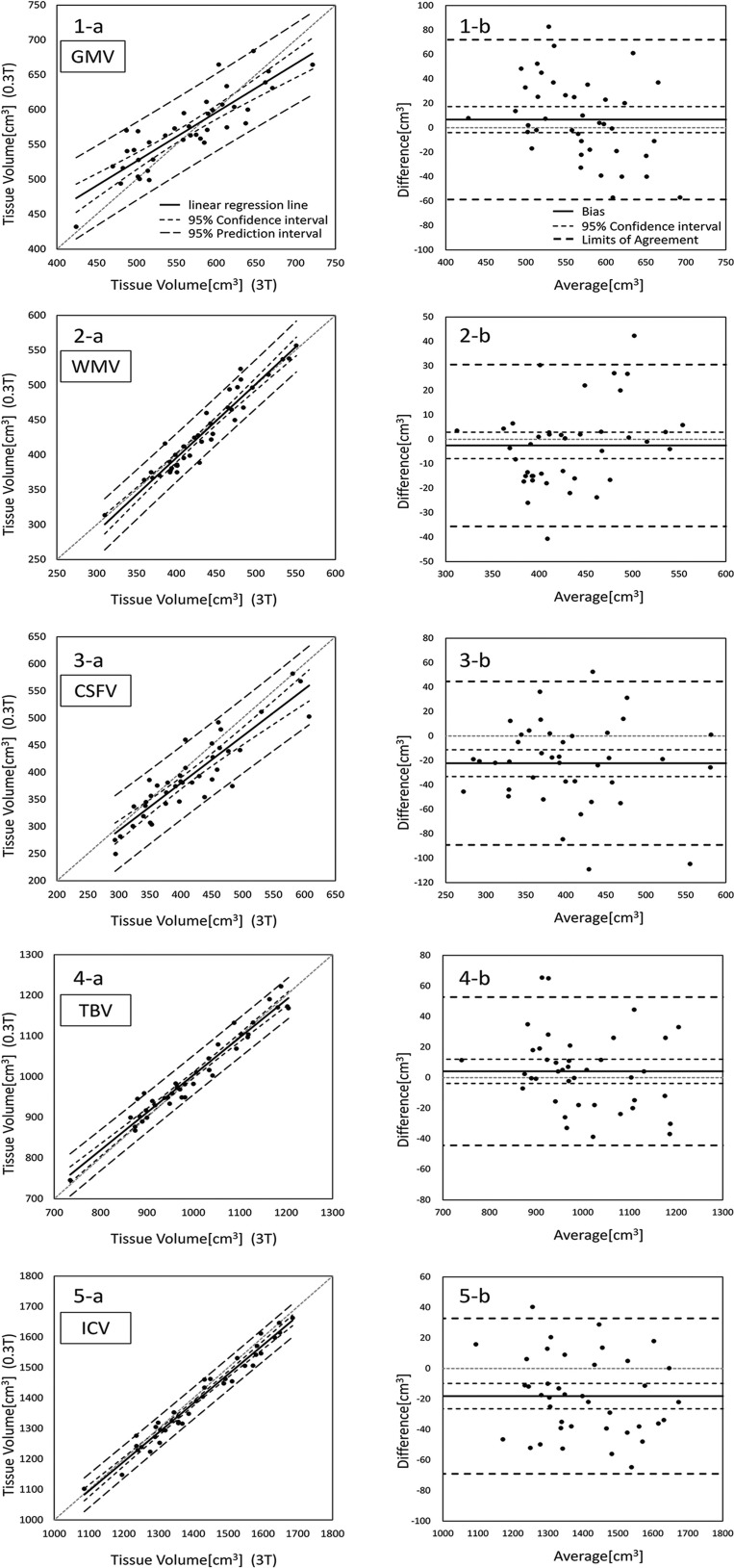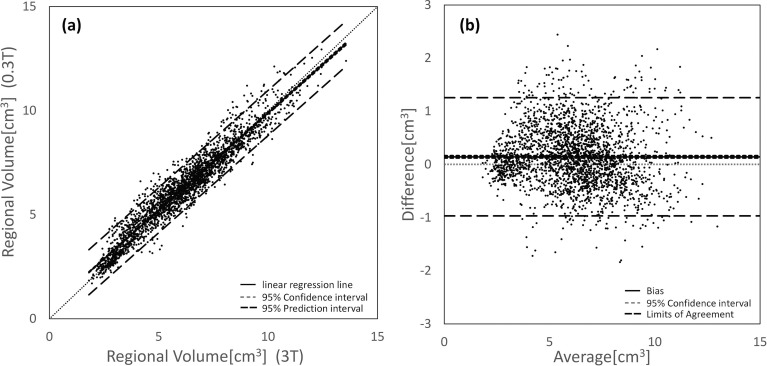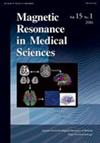脑容量测量与0.3和3-T磁共振成像的比较。
IF 3.2
3区 医学
Q2 RADIOLOGY, NUCLEAR MEDICINE & MEDICAL IMAGING
Magnetic Resonance in Medical Sciences
Pub Date : 2022-07-01
Epub Date: 2021-07-22
DOI:10.2463/mrms.tn.2020-0034
引用次数: 2
摘要
使用类内相关系数、相关分析和Bland-Altman分析对40名健康志愿者通过0.3- t和3-T扫描仪获得的颅内组织体积进行比较。我们发现在所有组织和大部分大脑区域中存在较高的类内相关系数、较高的Pearson相关系数和较低的百分比偏差,尽管在某些区域观察到微小的差异。这些发现可能支持低场磁共振成像脑容量测量的有效性。本文章由计算机程序翻译,如有差异,请以英文原文为准。



Comparison of Brain Volume Measurements Made with 0.3- and 3-T MR Imaging.
The volumes of intracranial tissues of 40 healthy volunteers acquired from 0.3- and 3-T scanners were compared using intraclass correlation coefficients, correlation analyses, and Bland-Altman analyses. We found high intraclass correlation coefficients, high Pearson's correlation coefficients, and low percentage biases in all tissues and most of the brain regions, although small differences were observed in some areas. These findings may support the validity of brain volumetry with low-field magnetic resonance imaging.
求助全文
通过发布文献求助,成功后即可免费获取论文全文。
去求助
来源期刊

Magnetic Resonance in Medical Sciences
RADIOLOGY, NUCLEAR MEDICINE & MEDICAL IMAGING-
CiteScore
5.80
自引率
20.00%
发文量
71
审稿时长
>12 weeks
期刊介绍:
Magnetic Resonance in Medical Sciences (MRMS or Magn
Reson Med Sci) is an international journal pursuing the
publication of original articles contributing to the progress
of magnetic resonance in the field of biomedical sciences
including technical developments and clinical applications.
MRMS is an official journal of the Japanese Society for
Magnetic Resonance in Medicine (JSMRM).
 求助内容:
求助内容: 应助结果提醒方式:
应助结果提醒方式:


